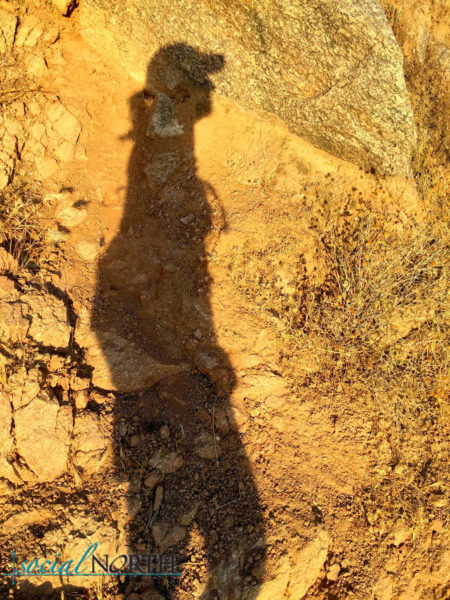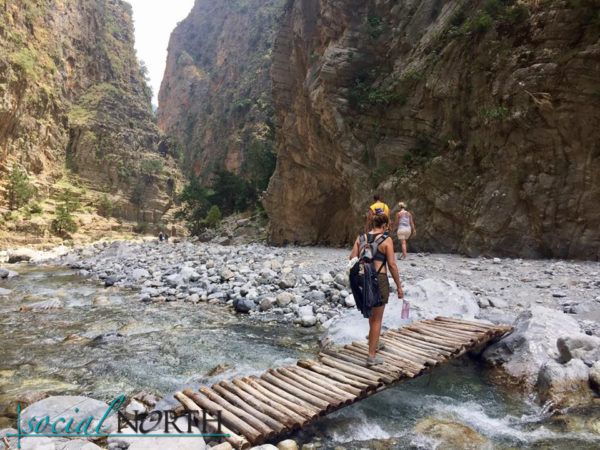In this case, the journey and the destination are the same thing…
 I first encountered a labyrinth while on a business trip to Arizona. I stood at the entrance intrigued, but unsettled and, yes, more than a little unsure about the point of it all. With young children at home, my career in flux and a mom who had just suffered a heart attack, I was overwhelmed by life’s challenges. Stepping into the serpentine path of the labyrinth felt like opening a window and bracing myself for the surge of cold air rushing in, a forced acknowledgement of the terror simmering just below the surface of my life. But if that first step unhinged me, the last step delivered a sense of peace I’d been long denying myself.
I first encountered a labyrinth while on a business trip to Arizona. I stood at the entrance intrigued, but unsettled and, yes, more than a little unsure about the point of it all. With young children at home, my career in flux and a mom who had just suffered a heart attack, I was overwhelmed by life’s challenges. Stepping into the serpentine path of the labyrinth felt like opening a window and bracing myself for the surge of cold air rushing in, a forced acknowledgement of the terror simmering just below the surface of my life. But if that first step unhinged me, the last step delivered a sense of peace I’d been long denying myself.
For many people, myself included, walking – especially walking a labyrinth – is meditation without the risk of falling asleep. Even though I’m a writer (and therefore sit for hours on end) I’ve always found it easier to express my thoughts while moving. Placing one foot in front of the other, rhythmically and consistently, allows my mind to stretch open to possibilities, to see solutions just out of reach. It’s as if those ideas were waiting for me to relax and find them.
Turns out the labyrinth adds a healthy dose of spirituality to the whole exercise. “The labyrinth is one of many tools that allows people to connect with themselves beyond the level of the chattering mind,” says Reverend Mark Lemon, Sechelt, British Columbia.
Although new to North America, labyrinths have helped people find solace and comfort for more than 4,000 years. Found in almost every ancient culture and religion, they’ve served as spiritual, meditative and prayer tools. Uncoiled, they’re about a 1/3 of a mile long and can be made from stones, pavement or mowed into a field. Indoor versions can be painted or taped onto floors and large canvases. Don’t confuse a labyrinth with a maze though, which is designed to confuse and confound. Instead, a labyrinth is a circular back and forth path that leads to a center – no dead ends or switch backs and there is only one entrance and one exit. The only decision the walker makes is whether or not to enter.
So, what is it about labyrinths that attract so many people?
Regular labyrinth walkers describe the back and forth sauntering as a rocking motion, a sort of cradling of the brain, gently swaying it in a way instinctively recognized by our primitive subconscious. Since walkers needn’t make choices about direction, the twists and turns are thought to balance out the left (analytical) and right (creative) brain, providing a peaceful place to think or meditate. For most people, even the experts, labyrinths remain a comforting mystery.
 Dr. Lauren Artress, author of Walking a Sacred Path: Rediscovering the Labyrinth as a Spiritual Tool, helped build the first labyrinth in North America at Grace Cathedral on Nob Hill in San Francisco in 1995. Since then, labyrinths have surfaced in jails, high schools, parks, museums, hospitals, spas and private homes. She describes the labyrinth as a three-part process.
Dr. Lauren Artress, author of Walking a Sacred Path: Rediscovering the Labyrinth as a Spiritual Tool, helped build the first labyrinth in North America at Grace Cathedral on Nob Hill in San Francisco in 1995. Since then, labyrinths have surfaced in jails, high schools, parks, museums, hospitals, spas and private homes. She describes the labyrinth as a three-part process.
- The entry allows walkers to release or purge worries in a safe place.
- The centre serves as a sanctuary to reflect on values, hopes or challenges in life,.
- The path out reflects a return to the world. “It [the labyrinth] becomes the path of life, experienced in a place where the mind is quiet.”
Many walkers enter searching for calmness, deepened spirituality or to grieve or celebrate a loved one’s life. Experts recommend labyrinth newbies think about a question – or a current life challenge – before entering for the first time. “As you’re walking you don’t have to think about anything other than the questions before you,” says Dr. Noelle Nelson, author of The Power of Appreciation.
Experts caution new walkers to take their time and not be tempted to leave the labyrinth too quickly once at the centre. The return path is as valuable as the walk to the center because it allows walkers to gather up all the problems left behind, re-examining and re-evaluating along the way. “You can let your focus shift from an illness or recent death to how valuable medicine is or to how lucky you are to be loved,” Dr. Nelson says. “You shift from not appreciating to appreciating.”
Wandering with purpose
The labyrinth might be more like a modern day pilgrimage, but instead of crossing geographical borders, this journey is inward. By intentionally walking, breathing and focusing on the path that unfolds, insights and emotions can rise to the surface. “When you move the body, the mind quiets much easier,” Dr Artress says. “For some people, praying while sitting still is like trying to hold a volleyball under water. Instead of praying, you use all your energy trying to keep that ball down.”
But it’s more than just walking and thinking, says Gailand MacQueen, author of The Spirituality of Mazes and Labyrinths. “The labyrinth is about simplicity and trust. Many people have come to a point where they want something simpler in life and they just want to trust the path, any path.”
Even avid labyrinth walkers admit that it’s not everyone’s cup of tea though. Some people fear they’ll lose their way, but that’s a fear of life, not the labyrinth. “The labyrinth allows you to enter into a deep intuitive process with yourself and that can be scary to people,” says Dr. Artress.
For me, walking the labyrinth took focus and energy – giving myself permission to slow life down, to take a moment to reflect inward, to listen to my heart instead of the chaos swirling around my brain. And in world where we’re connected to everyone, everywhere all the time, it’s not easy to simply turn that connection off and turn inward instead.
Getting lost, finding your way
For many people who are frustrated with traditional religion, the labyrinth breaks down barriers and offers a value-free sanctuary. Even though labyrinths are popping up on church properties with unprecedented zeal, the spirit of sharing without judgment seems to prevail. “It [the labyrinth at St Hilda’s] has allowed us to liaison with people we would have otherwise never connected with,” Reverend Lemon says. “It’s raised our profile in the community, letting them know we’re a progressive, open church that’s willing to explore spirituality on a deeper level.”
A member of Bells Corners United Church, Nepean, Ontario, says their labyrinth is used by a neighboring Muslim church as well as a group of autistic adults who use it before they go to bed at night. “We wanted it outdoors so it would always be open for anyone to use it.” The Sunday school uses it for games or learning Bible stories (comparing it to the turns on the road to Damascus) and the local community college uses it to teach some of their courses.
 “With a labyrinth, we have a place where people can connect with the divine and not ever feel locked out,” Pastor Lemon says.
“With a labyrinth, we have a place where people can connect with the divine and not ever feel locked out,” Pastor Lemon says.
Maybe part of the appeal of the labyrinth is that we don’t fully understand why or how it works, only that it does. Step by step. A labyrinth opens up a sense of where the sacred abides in each of us. And maybe that’s all we really need to know.
If you’re curious about labyrinth walking, go online to The World-Wide Labyrinth Locator and find one registered near you. Not all labyrinths are registered, so talk to friends, family and neighbors to find the hidden treasures in your community.
And if you’re really excited, build your own…


Latest comments